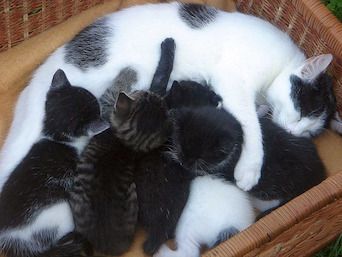Pet Exposure During Infancy Alters Gut Microbiota Composition
Analyzing different birth modes, researchers identified associations between gut microbiota composition in 3-month old infants and exposure to furry pets.

Researchers from the University of Alberta recently reported that, for different birth modes, pre- and postnatal exposure to furry pets alters gut microbiota composition in 3-month old infants. These findings, published in Microbiome, indicate an association between gut microbiota and pet ownership.
Gut microbiota development greatly influences future health and is affected by several factors, including birth mode (vaginal vs cesarean) and infant diet (breast milk vs formula). Given the rise in pet ownership, there has been growing interest in the impact of pet ownership on gut microbiota development.
Previous studies have reported an association between gut microbiota dysbiosis in infants and allergic disease, supporting the “microbiota hypothesis.” This hypothesis explains how environmental factors such as antibiotic usage have altered gut microbiota composition and increased allergic disease risk. Importantly, prenatal and early childhood pet exposure can lower this risk, according to studies evaluating pet ownership and allergic disease.
Study Design
Researchers selected a subsample of 746 infants from the Canadian Healthy Infant Longitudinal Development cohort. Fecal samples were collected from the infants when they were 3 to 4 months old; samples then underwent 16S rRNA sequencing and taxonomic classification.
The infants’ mothers, who were enrolled in the cohort during pregnancy, completed a pet ownership questionnaire. Using this information, researchers created 3 pet exposure categories for further analysis:
- Only prenatal pet exposure
- Prenatal and postnatal pet exposure
- No prenatal or postnatal pet exposure
Researchers also collected information on birth mode, the use of intrapartum antibiotic prophylaxis (IAP), and various demographic factors. Birth modes used for analysis were:
- Vaginal birth with IAP
- Vaginal birth without IAP
- Scheduled C-section
- Emergency C-section
Results
Pet Exposure
About 45% of households had no pets. For households with at least 1 furry pet, 8% owned pets only during pregnancy and 47% owned pets during and after pregnancy; dogs and cats were the predominant furry pets.
Gut Microbiota Composition
In general, gut microbiota diversity and richness increased with pet exposure. Increased richness with prenatal pet exposure could lower the risk of atopic disease, the authors noted.
Within individual birth modes, researchers observed notable changes in gut microbiota composition with pet exposure. For example, for vaginal births with IAP, Streptococcaceae abundance significantly decreased with prenatal pet exposure. Researchers mentioned that IAP typically is given to prevent group B Streptococcus (GBS) infection in infants. A previous study reported an association between maternal GBS infection and increased cardiovascular disease risk in infants born vaginally; interestingly, prenatal pet exposure decreased this risk with vaginal births.
Across all birth modes, the abundance of two genera—Ruminococcus and Oscillospira—significantly increased with pre- and postnatal pet exposure. Both genera are present in dogs and cats. Ruminococci regulate maintenance of the microbiota—mucin layer and predominate in formula-fed infants, but they have a poorly understood role in infant health. Oscillospira’s role in infant health is also not well known but has demonstrated a positive association with leanness in infants and adults and a negative association with pediatric inflammatory bowel disease.
Several demographic factors, including maternal asthma or allergy during pregnancy, presence of siblings, and breastfeeding status at 3 months, were not significantly associated with the observed associations between pet ownership and gut microbiota composition.
Conclusion
Taken together, these study results demonstrate how pet ownership can influence gut microbiota composition in early infancy according to birth mode, providing practitioners with useful translational information, the authors wrote. The authors suggested future studies to investigate the differential effects of different furry pet species on gut microbiota.
Dr. JoAnna Pendergrass received her Doctor of Veterinary Medicine degree from the Virginia-Maryland College of Veterinary Medicine. Following veterinary school, she completed a postdoctoral fellowship at Emory University’s Yerkes National Primate Research Center. Dr. Pendergrass is the founder and owner of JPen Communications, a medical communications company.